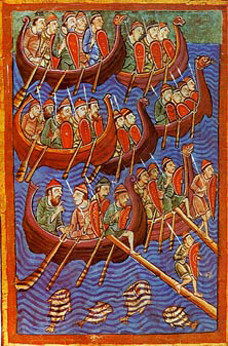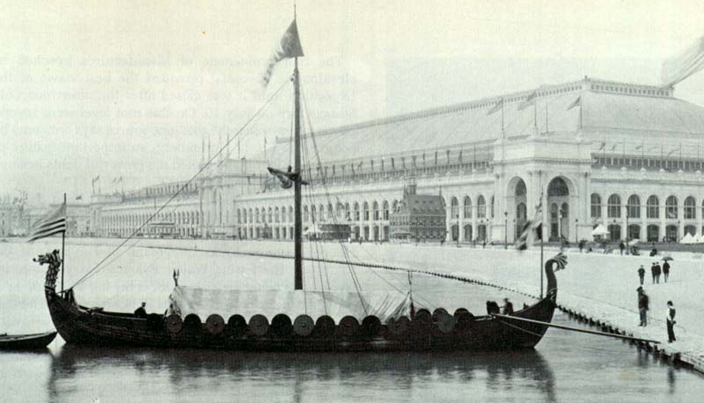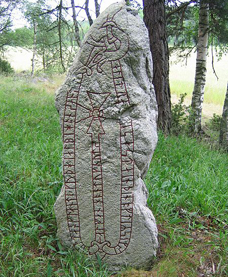The Vikings

Danes about to invade England
From "Miscellany on the life of St. Edmund" from the 12th century.
Source: Pierpont Morgan Library, New York.
Who Were the Vikings?
The Vikings from Scandinavia were skilled seafarers and warriors who were often hired as mercenaries by warring groups in other areas of Europe. Through this experience, many came to the realisation that the non-Scandinavian world was divided up into a multitude of weak states, often troubled by political unrest and rebellion.
The Dawn of Viking Raids
In 787, three Viking ships landed in Wessex and their occupants began to plunder coastal towns there. Six years later, in June 793, the Vikings raided the Holy Island of Lindisfarne, in the north east of England, home to a monastic community set up by an Irish Bishop, Aidan, in 635, but by then better known for one of his successors, Cuthbert, who had died in 687 and since been venerated as a saint. This unfortunate event marked the beginning of the age of Viking raids.
By the early ninth century, raids launched on Western Europe by ambitious Viking chiefs became commonplace. The aim of these raids was solely to plunder, taking advantage of their victim states’ weakness.
How the Vikings Managed to Succeed
The Vikings’ extremely fast boats allowed them to take their enemies by surprise – their main advantage. Arriving by sea, their boats were versatile enough to enable them to navigate up rivers to reach wealthy urban settlements located inland. Monasteries were often a choice target as because they were wealthy and poorly defended. The fact that the Vikings were pagans meant that they had no moral qualms about raiding Christian religious institutions like the one at Lindisfarne.

A replica of the Viking Gokstad Ship, seen at the Chicago exhibition of 1893. The original ship dates from the end of the ninth century.

A runestone in Sweden erected by a Viking in commemoration of the taking of one Dangeld from England.
Danegeld: Paying the Vikings Off
By the second half of the ninth century, a practise arose whereby monks and kings offered to pay the Vikings to retreat. This payment was called Danegeld (Danish Gold). Paying off the Vikings was to prove to become a never-ending cycle, as there was nothing to stop new Viking groups from attacking towns that had already paid Danegeld to somebody else. It did have some positive aspects though: hoarded wealth paid as Danegeld was often used by the Vikings to purchase goods from the same regions they plundered, stimulating their economies.
Eventually, some Viking groups came to settle in the lands they had raided, often by rivers, where they engaged in fishing, maritime trade and piracy.

